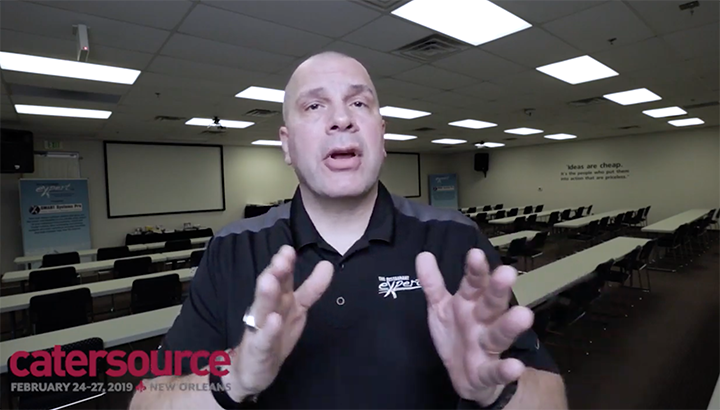Many caterers think the solution to an increase in labor costs is to cut labor. Apples to apples, right? Wrong! There are not enough labor controls any caterer can put in place to limit the impact of increasing minimum wages on the business. The solution has to run across all aspects of the business. In short, you need to understand, calculate and then attack your prime cost.
What is prime cost? Prime cost is your total of cost of goods sold, which includes food, beverage, draft beer, bottle beer, wine and liquor costs, plus your total labor cost, to include taxes, benefits, and insurance. For old timers like me, this used to be referred to as our controllable expenses. I break it down to food, beverage, and labor costs.
It's been my experience that most independent caterers are running at least 10 points above a healthy prime cost. In most cases, if changes aren't made, you are going to be taking profits right out of your own pockets to meet the minimum wage hikes, or you’re going to be closing your doors.
Consider this question: Wouldn’t you rather make changes to your operation than give away your profits, or worse, have to close your catering company?
Don’t miss David Scott Peters’ presentation at Catersource 2019. He’s presenting “Keeping Catering Costs Separate from Your Restaurant Costs” on Sunday. Feb. 24. Click here to watch a short YouTube video of David talking about his session. Click here to view the education schedule.
If you answer yes to this question, the next step is to figure out your current prime cost and identify how many points you have to cut to hit a target that is right for your style of catering company.
Your prime cost
To figure out your prime cost, a caterer has to begin with a budget template for the next 12 months of operation. Although budget is a dreaded word, the budgeting process is really quite simple:
1. Start with gathering some important information such as gross sales, cost of goods sold (COGS), labor by position, and all operating expenses for the past 12 months.
2. Next, determine if you are expecting sales to go up, down, or remain the same for the next 12 months.
3. Split your gross sales up by sales category and determine what your COGS percentage is by sales category.
4. Split labor up by position by labor cost percentage for hourly employees and dollar amount for salaried positions.
5. When you build your budget template going forward for all variable line items, its sales multiplied by the percentage and for fixed expenses, it’s the total for the year divided by 12 to come up with the monthly fixed cost.
Industry benchmarks
Once your budget template is finished and you identify your prime cost, what should it be? The industry benchmark for restaurant prime cost has been an average 65%. However, our margins have been shrinking with higher food costs and increased administrative costs such as health care and insurance. Plus, I have never believed in being average, so I have been driving caterers that do at least $850,000 a year in gross sales to a prime cost target of 55% or lower. This means that for a caterer doing a million a year in gross sales running at a 65% prime cost, I am saying with the right systems in place there is room to lower the prime cost by 10 points, netting owners $100,000 bottom-line profitability. What you are going to find is that you will have to start attacking your cost of goods sold to offset the rising labor costs.
After reading through this, you might be feeling a little pessimistic. Although I want to give you a wake-up call, it is my intention to also provide you with hope and motivation. If you take a proactive approach and attack your prime cost, especially if you can get ahead of increasing minimum wages, you will get through this, and you will come out a cleaner, meaner, fighting caterer.
The catering + events show of the year is back! James Beard Award winners, TED style keynotes, influencers galore, and food for days. See all that’s in store here!




